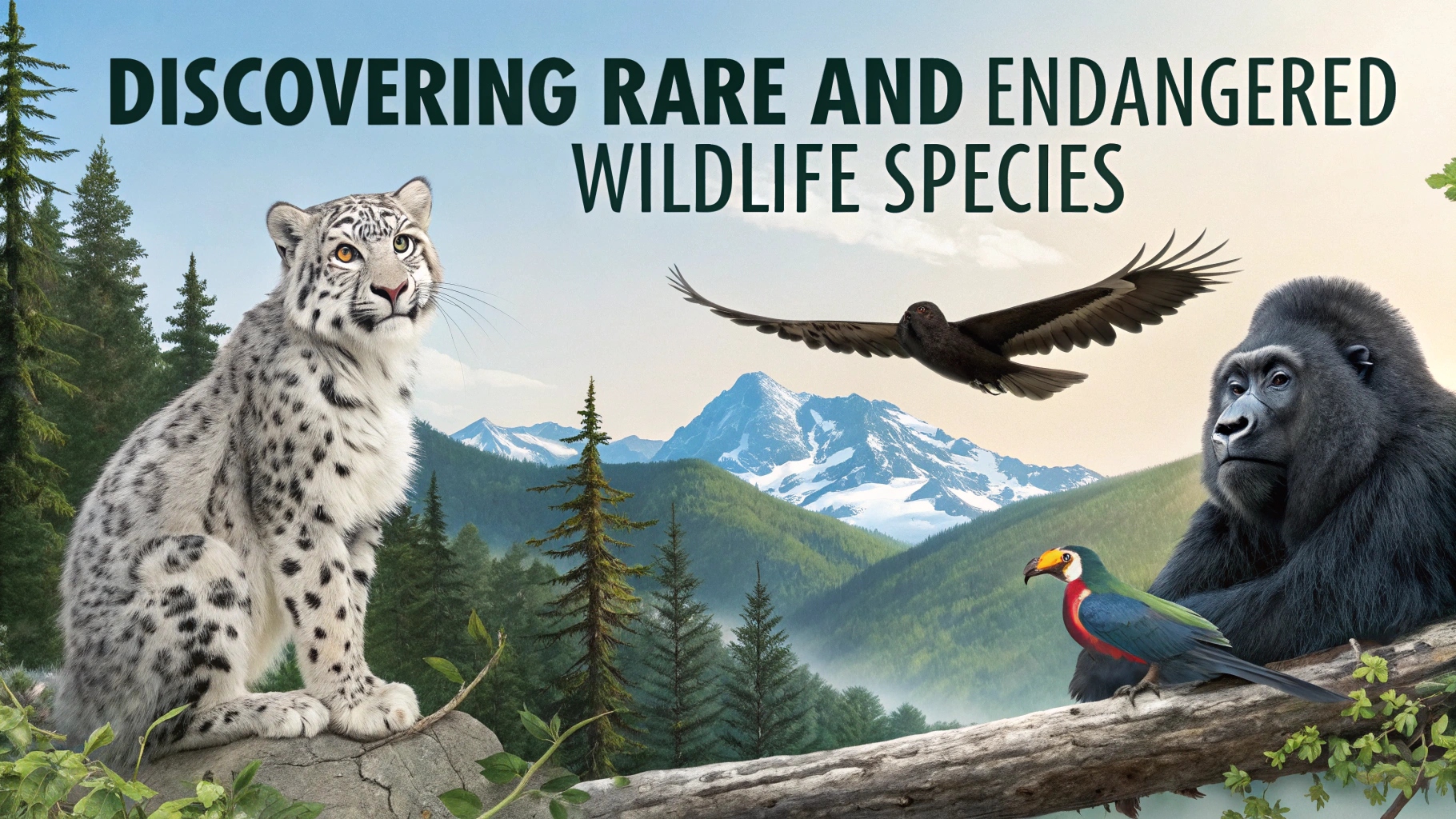Discovering Rare and Endangered Wildlife Species
Introduction: Why Rare Species Matter
Around the globe, countless animal and plant species form the backbone of healthy ecosystems. Some of them, however, are so scarce that they teeter on the edge of extinction. These rare and endangered species not Wildlife only represent the beauty and diversity of the natural world but also serve as vital indicators of environmental balance. Learning about these remarkable creatures helps us understand the urgency of conservation and the importance of protecting natural habitats for generations to come.
Understanding What Makes a Species Rare
A species is often considered rare when its population is very small, its habitat is limited to a specific region, or it faces severe threats from human activity. Unlike common animals that adapt well to urbanization, rare species are usually highly specialized in their diet, habitat, or breeding patterns. This makes them more vulnerable to changes such as deforestation, pollution, and climate shifts. In many cases, the rarity of a species is the first warning sign that it may eventually become endangered or even extinct.
Human Impacts on Endangered Species
One of the primary reasons behind the decline of rare species is human activity. Large-scale deforestation eliminates natural homes for forest-dwelling animals, while industrial pollution contaminates rivers and oceans, endangering aquatic life. Urban expansion fragments habitats, making it difficult for Wildlife species to migrate or Wildlife find food. Additionally, illegal hunting and poaching place enormous pressure on populations that are already small. These factors combined create a cycle where rare species struggle to survive in a world that is rapidly changing.
Climate Change and Its Role
Climate change has emerged as one of the most significant threats to rare and endangered species. Rising global temperatures disrupt breeding cycles, force animals to migrate to cooler areas, and alter food availability. Polar bears, for example, face dwindling ice caps, which limit their ability to hunt seals. Similarly, Wildlife coral reefs—home to countless marine organisms—are bleaching due to warming seas. These disruptions don’t just harm individual species but also destabilize entire ecosystems that depend on them.
Iconic Rare Animals Around the World
From dense rainforests to frozen tundras, the Earth is home to extraordinary rare animals. The snow leopard, known for its elusive nature and thick fur, roams the high mountains of Central Asia but is increasingly under threat Wildlife due to habitat loss. The axolotl, a unique amphibian from Mexico, is critically endangered as its freshwater habitat shrinks. In the Amazon rainforest, pink river dolphins face dangers from pollution and dam construction. These animals symbolize the fragility of our planet’s ecosystems and highlight the need for urgent action.
The Role of Local Communities in Conservation
Conservation is not solely the responsibility of international organizations or governments. Local communities living near habitats play a crucial role in protecting rare species. Many indigenous groups have traditional knowledge that helps maintain ecological balance. By involving communities in conservation Wildlife projects, such as eco-tourism, habitat restoration, and sustainable farming, it becomes possible to create a model where humans and nature thrive together. When local people see direct benefits—such as jobs or improved resources—they are more likely to support the preservation of rare species.
Technological Advances in Conservation
Modern technology has become a powerful tool in tracking and protecting endangered species. Satellite imagery helps scientists monitor deforestation and habitat destruction in real-time. Camera traps in forests capture images of elusive animals, providing insights into their population size and behavior. DNA analysis assists in identifying poached animal parts and tracking illegal wildlife trade networks. These innovations allow conservationists to act faster and with more precision, making protection efforts more effective than ever before.
Importance of Protected Areas and Reserves
National parks, wildlife sanctuaries, and marine reserves act as safe havens for rare species. These protected areas limit human interference and provide animals with the space they need to feed, breed, and migrate. The success stories of species recovery often originate in such regions. For example, the giant panda population in China has seen a significant increase due to decades of focused conservation within protected habitats. Expanding and properly managing these areas remain essential for preserving global biodiversity.
Education and Awareness: A Vital Step
One of the most overlooked aspects of conservation is education. Many people are unaware of how their daily choices—such as consumption of unsustainable products, excessive plastic use, or demand for exotic pets—impact rare species. Raising awareness through schools, documentaries, and social media campaigns can inspire individuals to adopt eco-friendly habits. When more people understand the importance of biodiversity, they become advocates for change, pushing governments and corporations to adopt stronger environmental policies.
Success Stories in Conservation
Despite the challenges, there are inspiring examples of how dedicated conservation can save species from extinction. The Arabian oryx, once declared extinct in the wild, has been reintroduced successfully thanks to breeding programs and habitat protection. Similarly, sea turtle populations in several regions have rebounded after strict protection of nesting beaches. These successes prove that with collective effort, determination, and resources, it is possible to reverse the decline of rare species and restore balance to fragile ecosystems.
How Individuals Can Contribute
Individuals often wonder if their actions truly make a difference in protecting endangered species. The answer is yes. Simple steps such as reducing plastic use, supporting eco-friendly brands, donating to conservation organizations, and avoiding products made from endangered animals all contribute to the larger cause. Wildlife Volunteering for local conservation projects or participating in citizen science initiatives also allows people to directly support the protection of rare species. Every small action adds up, creating a ripple effect that supports global biodiversity.
The Link Between Rare Species and Human Wellbeing
Protecting rare and endangered species is not just about preserving beauty or diversity—it is closely tied to human survival. Healthy ecosystems provide clean air, water, and fertile soil. Forests prevent floods and regulate Wildlife climate, while oceans act as massive carbon sinks. Rare species play unique roles in these ecosystems, often acting as keystone species whose presence supports countless other forms of life. By protecting them, we are ultimately safeguarding our own future.
Challenges Ahead and the Road Forward
The road to saving rare species is filled with challenges. Funding shortages, political barriers, and the ongoing demand for natural resources often slow down conservation progress. However, international agreements such as the Convention on Biological Diversity and the Paris Climate Accord show that global cooperation is Wildlife possible. Moving forward, it is crucial to strengthen these collaborations, increase funding for scientific research, and integrate conservation into everyday decision-making processes at all levels of society.
Conclusion: Preserving Nature’s Rarest Treasures
Rare and endangered species represent the most delicate threads in the intricate web of life. Their survival is not only a matter of ecological importance but also a moral responsibility. By supporting conservation, embracing sustainable practices, and spreading awareness, humanity has the power to protect these unique species. The journey of discovering and preserving rare creatures reminds us that the future of wildlife—and the health of our planet—depends on the choices we make today.


